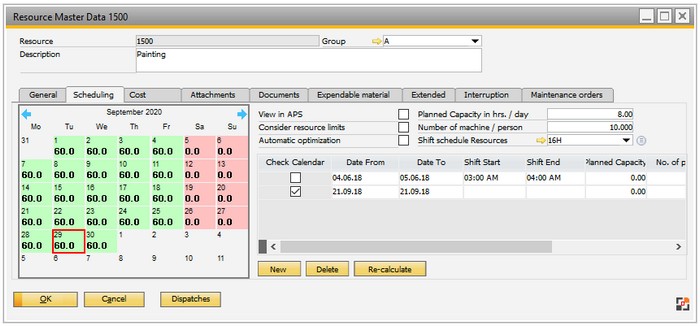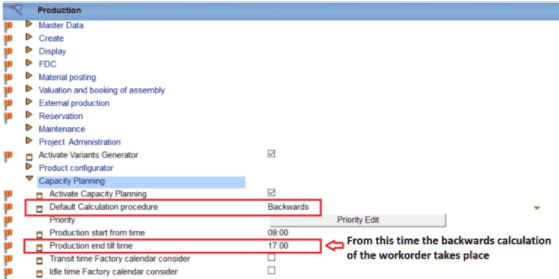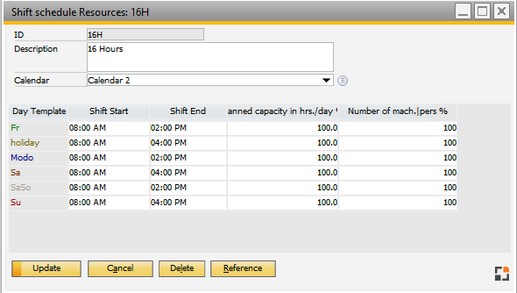The utilization or availability of a resource can be set per day. Since a resource can also constitute a personnel group, this function can also be considered as the vacation schedule of a personnel group.
PATH: see "Edit resources".

Window stamm_arbplatz_edit.psr
Field |
Meaning |
||||
View in APS |
|
||||
Consider resource limits |
|
||||
Automatic optimization |
|
||||
Planned Capacity in hrs. / day |
|
||||
Number of machines / persons |
|
||||
Shift schedule Resources |
|
Right to the resource calendar exceptions for certain periods can be entered. These are displayed in a table.

Window stamm_arbplatz_edit.psr
Field |
Meaning |
Date from/to |
Period in which the exception applies. |
Check calendar |
Check mark active: the factory calendar is not taken into account at capacity calculation.
If the factory calendar is NOT taken into account, the following formula applies: Total net capacity is (planned capacity in hours/day) * (number of mashines / persons) *
If the factory calendar is taken into account, the following formula applies: Total net capacity is (planned capacity in hours/day) * (number of mashines / persons) * ( %-value as per factory calendar). |
Shift Start/End |
Shift start/end. If set, the shift stored in shift schedule for resources is overwritten. For further information See Shift schedule for resources.
By leaving the field empty, the default shift applies. Attention: Shift over midnight is not possible. |
Planned capacity |
Overwrites the planned capacity for this shift in the given period. |
Number of persons |
Overwrites the number of single resources (see above) in the given period. |
Reason |
Reason for the exception. |
See
back to edit resource


